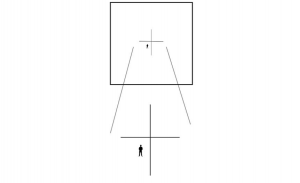This post is also available in Dutch.
Just imagine: you are a police officer in wild pursuit of a criminal. You are climbing over a fence and exactly then and at that particular spot your colleague is beaten up. You did not see anything, however, and did not come to your colleague’s rescue. How can this happen?
This is exactly what happened to an American policeman in 1995. It may be hard to believe that he could have overlooked something like this, but it is not surprising at all. This was possibly an ill-fated case of what is known as ‘inattentional blindness’.
Attention causes blindness
Inattentional blindness means that your attention is so strongly focused on one thing that you no longer process other information from your surroundings. You become, as it were, blind to everything for which you have no attention.
A good example of this is the so called gorilla experiment. In this experiment, test subjects were shown a video clip in which people dressed in white and black shirts were throwing a ball back and forth to each other. Test subjects were instructed to count how many times someone wearing a particular colour of shirt threw the ball.
What the test subjects did not know is that halfway through the video clip, a person in a full gorilla costume would walk through the field. And guess what: almost half the number of test subjects did not see the gorilla! See for example in the video clip below how clever advertisers have gratefully made use of this phenomenon.
Re-enacting the brawl
Is this effect so strong, however, that it can explain what happened to the American policeman in the event described above? In a scientific field experiment, this was investigated by placing test subjects in a similar situation to the policeman. When in daylight, only slightly more than half of the subjects noticed the brawl. If the pursuer’s attention was entrusted with an additional task, this number dropped to 40%. In the dark, this percentage dropped even further: only 1 out of 3 subjects realised that there was a fight on their route.
Does attention blindness affect everything?
It is still unclear whether inattention blindness always works in the same manner. It appears that some information can be processed more quickly. In a lab-experiment, test subjects had to carry out a computer task in which they briefly saw a cross (‘+’) in the middle of the screen. Each time, they had to indicate which line of the cross was longer, the vertical or the horizontal line (see image).

In some rounds, an extra icon was shown on the screen at the same time as the cross. The researchers already knew that noticing the extra icon would be difficult; after all, the attention is focused on the lines of the cross. But the researchers wondered whether test subjects would notice some types of icons more easily than others. There were tests with different icons: hands, human figures, instruments, and vehicles, but also abstract figures. What was the result? Icons of human bodies were spotted more often than the other icons. Apparently, such information attracts our attention much more.
Although attention to one thing can certainly blind us for other things, there are differences. For example, we appear to be more sensitive to information about people, such as bodies, which also makes us less blind. It would be very useful if we knew more about this, for example in order to reduce attention blindness in unsafe situations. The Donders CityLab in the muZIEum in Nijmegen is doing research on this. Come visit and join us!
Credits
Author: Felix Klaassen
Buddy: Floortje Bouwkamp
Editor: Roeland Segeren
Translation: Ellen Lommerse
Translation editor: Marisha Manahova
Featured image courtesy of Brands & People via Unsplash
